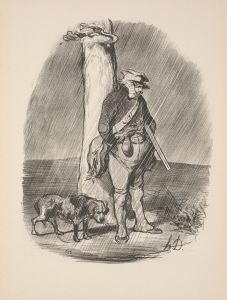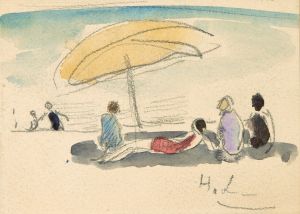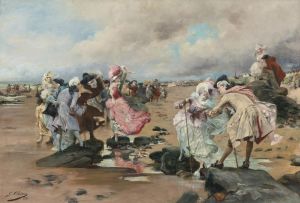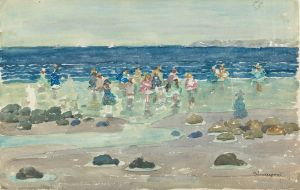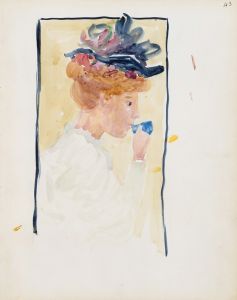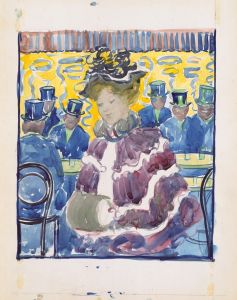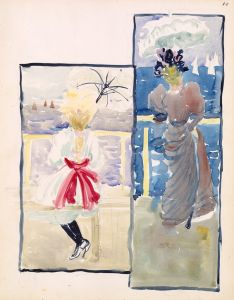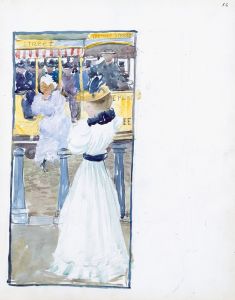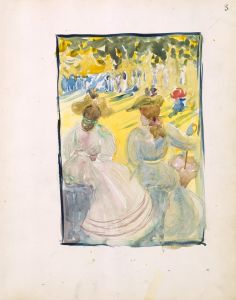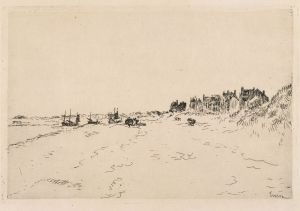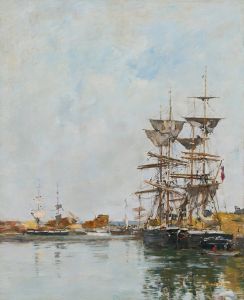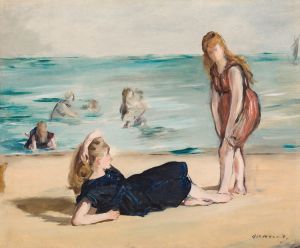
Revere Beach
A hand-painted replica of Maurice Prendergast’s masterpiece Revere Beach, meticulously crafted by professional artists to capture the true essence of the original. Each piece is created with museum-quality canvas and rare mineral pigments, carefully painted by experienced artists with delicate brushstrokes and rich, layered colors to perfectly recreate the texture of the original artwork. Unlike machine-printed reproductions, this hand-painted version brings the painting to life, infused with the artist’s emotions and skill in every stroke. Whether for personal collection or home decoration, it instantly elevates the artistic atmosphere of any space.
Maurice Prendergast's "Revere Beach" is a notable work by the American Post-Impressionist painter, known for his vibrant use of color and unique style that blends elements of Impressionism with decorative design. Prendergast, born in 1858 in St. John's, Newfoundland, was a prominent figure in the American art scene during the late 19th and early 20th centuries. His work is characterized by its lively depictions of leisure activities and urban scenes, often capturing the essence of modern life with a keen eye for detail and composition.
"Revere Beach," painted around 1896, is one of Prendergast's celebrated pieces that exemplifies his fascination with public spaces and social gatherings. Revere Beach, located just outside of Boston, Massachusetts, holds the distinction of being the first public beach in the United States, established in 1896. It quickly became a popular destination for city dwellers seeking respite from the urban environment, offering a place for recreation and relaxation.
In this painting, Prendergast captures the bustling atmosphere of the beach with his signature style. The composition is filled with figures enjoying the seaside, depicted in a mosaic of bright colors and rhythmic patterns. Prendergast's use of watercolor and gouache on paper allows for a fluidity and transparency that enhances the sense of movement and light. The figures, though not highly detailed, are animated and expressive, conveying the joy and leisure of a day at the beach.
Prendergast's approach to "Revere Beach" reflects his broader artistic influences and interests. He was deeply inspired by the works of European artists, particularly the Post-Impressionists like Paul Cézanne and the Nabis group, which included Pierre Bonnard and Édouard Vuillard. These influences are evident in his emphasis on color harmony and the decorative arrangement of forms. Prendergast's work often blurs the line between fine art and design, creating compositions that are as much about pattern and color as they are about the subject matter.
"Revere Beach" is also significant for its depiction of a diverse crowd, illustrating the democratizing effect of public spaces in the late 19th and early 20th centuries. The painting reflects the social changes of the time, as people from various backgrounds mingled in shared environments like public beaches and parks. This aspect of Prendergast's work offers insight into the cultural dynamics of the period, highlighting the evolving nature of social interactions in urban settings.
Maurice Prendergast's contribution to American art is marked by his innovative use of color and form, and "Revere Beach" stands as a testament to his unique vision. The painting is part of the collection at the Museum of Fine Arts in Boston, where it continues to be appreciated for its artistic merit and historical significance. Through works like "Revere Beach," Prendergast has left a lasting legacy, capturing the spirit of his time with a style that remains influential and admired.





